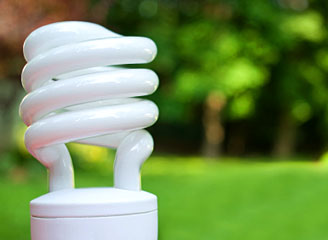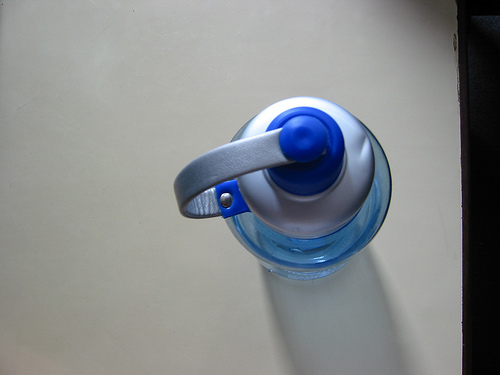The following is a guest post submitted by Elisa Odabashian, Director, West Coast Office and State Campaigns, and Dr. Urvashi Rangan, Director of Technical Policy, Consumers Union.
It’s the stuff of a good Hollywood movie-a potentially toxic chemical lurking in the bodies of most unwitting Americans; a decade of mounting but scuttled scientific evidence; government inaction; undue influence and public denials of harm by the powerful chemical industry; congressional inquiries; a crescendo of outcry by consumers demanding that something be done-and still, the battle to ban bisphenol A (also known as BPA) in food and drink containers rages on.
Now, California has become the prime battleground for this David v. Goliath contest.
BPA is a widely-used chemical found in food and beverage can linings and a building block of polycarbonate plastic used to make a range of products such as sports bottles, food-storage containers, baby bottles, and “sippy” cups. Numerous studies have shown that BPA can leach from containers into foods and beverages.
Never meant to be ingested, BPA has potential links to an array of human health problems, including diabetes, heart disease, cancers, infertility, obesity, and neurological disorders. A 2007 Centers for Disease Control study showed that 93 percent of Americans have BPA in their urine. And a recent study suggests that BPA stays in the body longer than previously believed. Babies and young children may be particularly vulnerable because they may metabolize BPA more slowly than adults.
Several government and non-governmental scientific bodies have assessed the safety of BPA, and indicated concerns, while the Food and Drug Administration (FDA) has not yet. Since 2007, Congress has questioned whether the BPA industry has been unduly influential in FDA’s assessment of scientific studies of BPA. Congress recently introduced legislation to ban BPA in food contact substances and FDA has initiated yet another review of BPA safety-and the hope is that this time, more than a handful of selected studies will be considered.
All of this begs the critical question: why has this product been allowed to remain on the market for so long? The answer points to a far larger systemic problem with chemical regulation in this country, which operates under the principle of proof-of-harm over proof-of-safety, leaving consumers as the ultimate guinea pigs.
Almost a decade ago, Consumers Union, the nonprofit publisher of Consumer Reports, was one of the first to test BPA in baby bottles, and to warn consumers about its potential dangers. Today, an array of groups, including consumer, health, environmental, medical and scientific, have urged FDA to remove BPA from food and beverage containers, and at the very least, to protect the most vulnerable consumers-young children and pregnant women.
Several jurisdictions have banned BPA in baby bottles and sippy cups, including Suffolk County, New York, Chicago and Minnesota. Connecticut also recently banned BPA in reusable food and beverage containers, as well as infant formula and baby food cans and jars.
Now California is at the forefront of the fight to protect young children from exposure to BPA. A bill authored by Democratic state Sen. Fran Pavley (who also authored legislation giving California the highest standards in the nation for reducing greenhouse gasses) would essentially ban BPA in products such as baby bottles, sippy cups, infant formula and baby food jars designed for children ages three and younger. The bill recently passed the Senate but faces stiff opposition in the Assembly by the chemical and infant formula industries.
And the opposition is formidable. Internal notes from a recent meeting of can manufacturers disclosed the companies’ plans to thwart the California legislation by “befriending people that are able to manipulate the legislative process.”
While some in industry stand in the way of science, others have moved to do the right thing. Recently, six of the largest manufacturers of baby bottles — Avent, Disney First Years, Gerber, Dr. Brown, Playtex and Evenflow — said that they will no longer sell BPA bottles.
A number of retailers, including Whole Foods, Babies ‘R’ Us, Safeway, Target, Toys ‘R’ Us, CVS, and Wal-Mart, have done the same. At least two major sports bottle manufacturers, Nalgene and CamelBak, have stopped selling BPA bottles. One chemical company, Sunoco, announced it will restrict the sales of the controversial chemical in baby bottles and food containers for children under three. A BPA ban does not have to be onerous for industry. Consumer Reports 2008 tests of “BPA-free” bottles found several alternatives to polycarbonate plastic in the same price range.
Some canned food companies, like Eden Foods, Eco-fish and Vital Choice, claim to be exploring alternatives to BPA-resin can liners. For nearly a decade, Japan’s canned food industry has been actively reducing the levels of BPA exposure from the lining of food and beverage containers.
As more consumers proactively seek out BPA-free products, it is not only feasible, but potentially profitable, for industry to switch to alternative chemicals in the production and sale of food and beverage containers-ones that don’t leach BPA. California should continue the state’s powerful tradition as a national policy leader and a pioneering watchdog of consumer health and safety, especially when it comes to protecting small children from the dangers of BPA.



